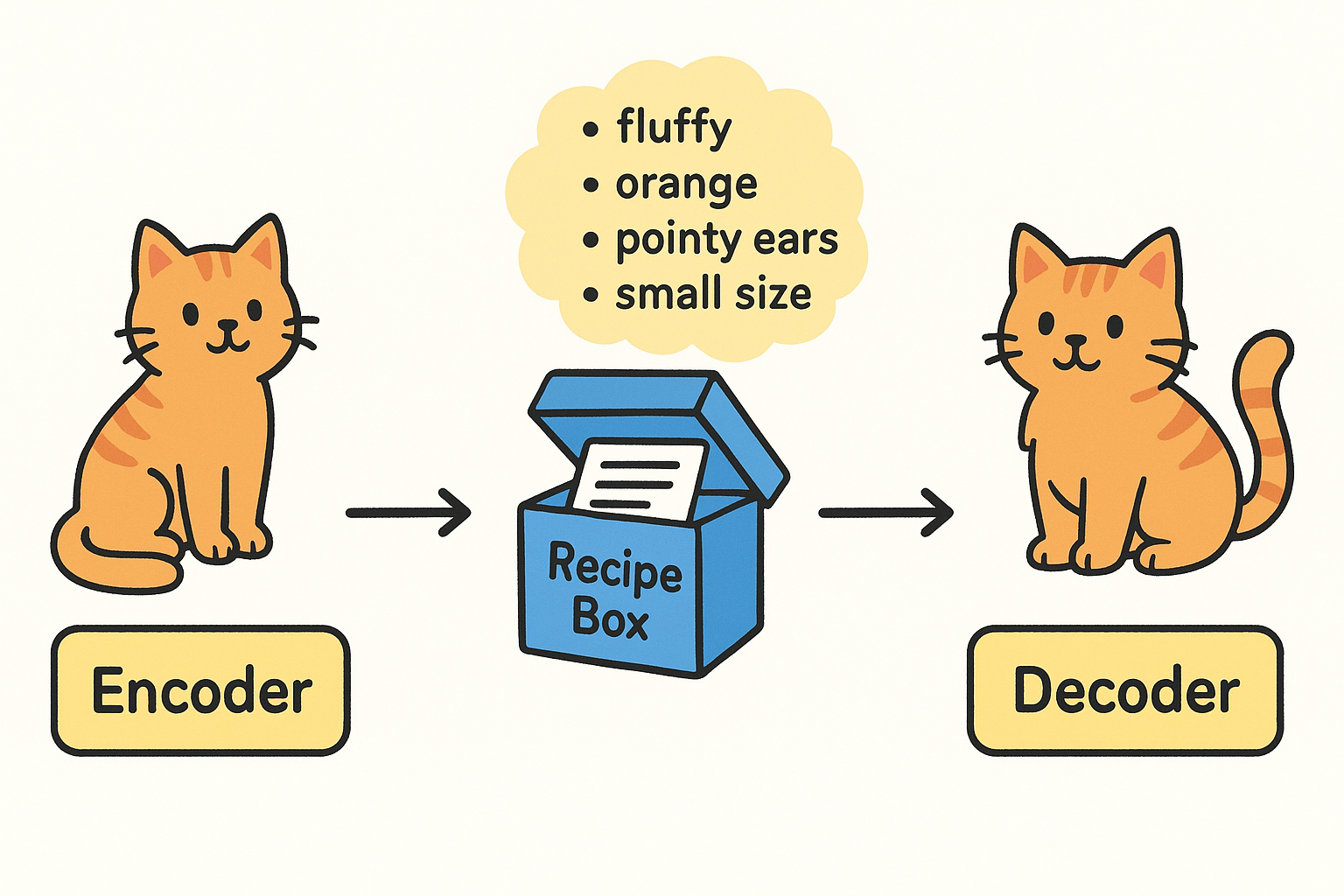Variational Autoencoders
Diederik Kingma, a scientist at Google, and Max Welling, a professor at the University of Amsterdam, introduced variational autoencoders (VAEs), a generative AI algorithm that generates new content, identifies anomalies, and removes noise using deep learning.
Like I'm a 10 year old explainer
Imagine you have a magical art machine that can do two amazing things!

The Squishing Part (Encoder) First, it takes a picture - let's say of your cat - and squishes all that information down into a secret recipe. Instead of remembering every single whisker and spot, it writes down just the important bits like "fluffy", "orange", "has pointy ears", "small size". It's like when you pack for holiday and squish all your clothes into a tiny suitcase!
The Recipe Box This secret recipe goes into a special box. But here's the clever bit - the box doesn't just store one exact recipe. It says things like "somewhere between quite fluffy and very fluffy" or "orangish-ginger colour". It's a bit fuzzy on purpose, like when you tell your friend about your cat from memory rather than showing them a photo.
The Drawing Part (Decoder) Then the second part of the machine reads this fuzzy recipe and tries to draw a new cat picture from it. Because the recipe was a bit fuzzy (saying "orangish" instead of the exact shade), the new cat might look slightly different - maybe a tiny bit more ginger, or the tail might be a bit fluffier. But it still looks like a proper cat!
Why is this brilliant? The machine learns what makes a cat look like a cat by practising with thousands of pictures. After all that practice, you can even make up new recipes (like "very fluffy" + "grey" + "big") and it will draw you a completely new cat that never existed but still looks real!
It's called "variational" because of that fuzzy recipe box that adds a bit of randomness, and "autoencoder" because it encodes (squishes) and decodes (unsquishes) automatically. Scientists use these machines to create new pictures, compress files to save space, and even help computers understand what makes things look the way they do!